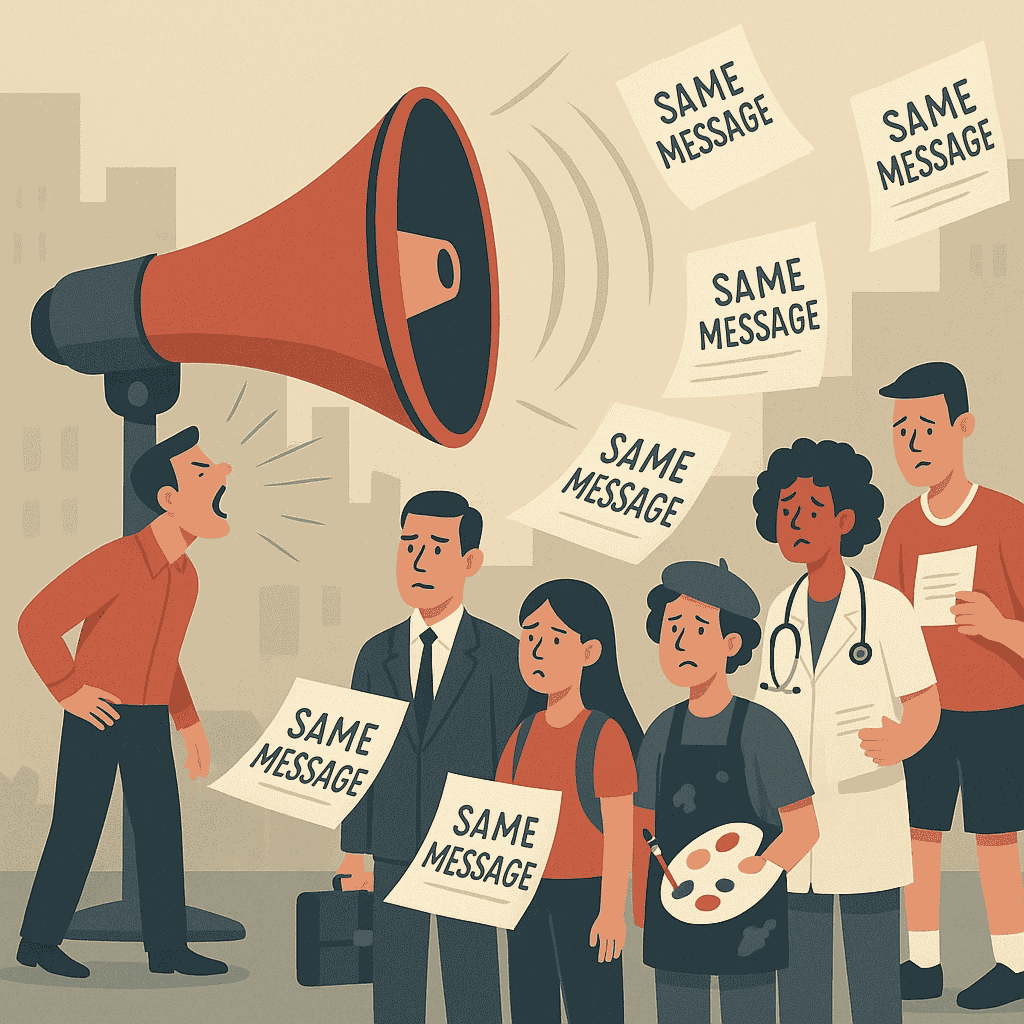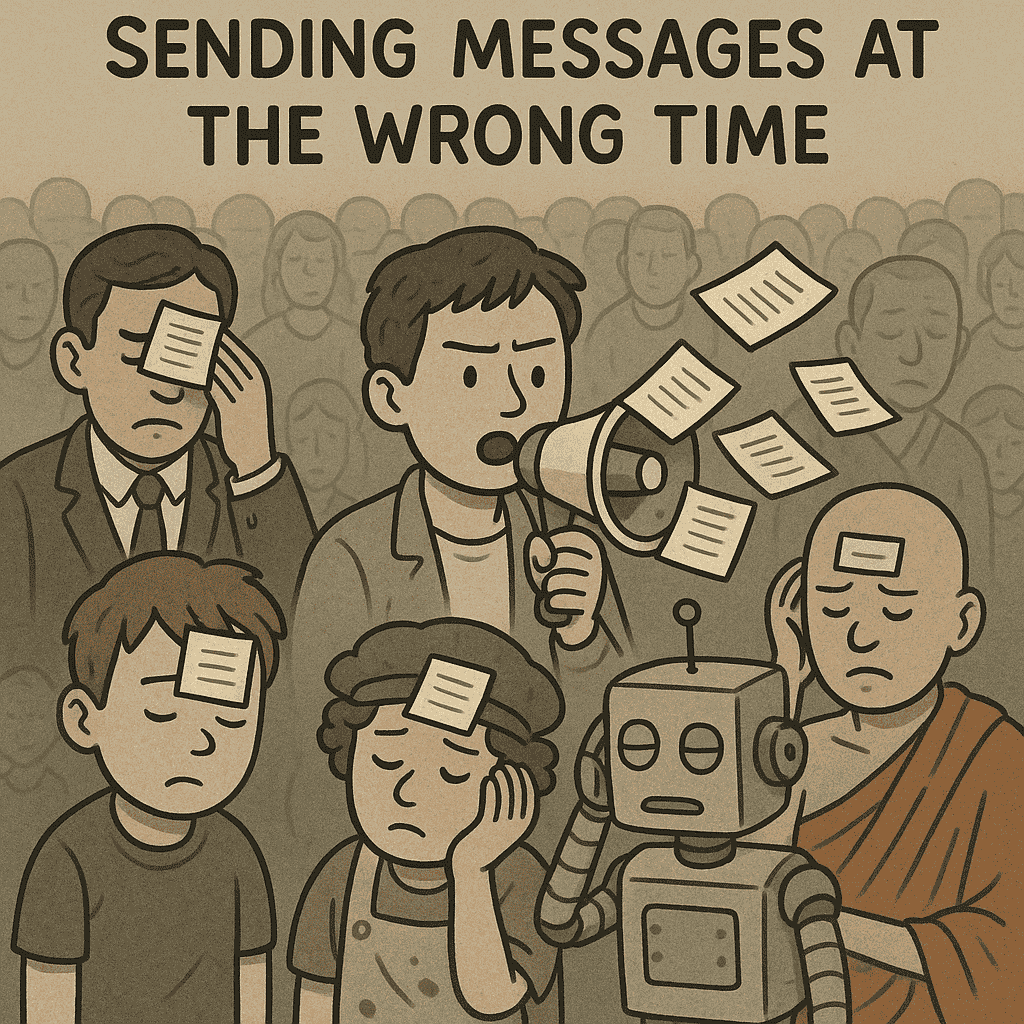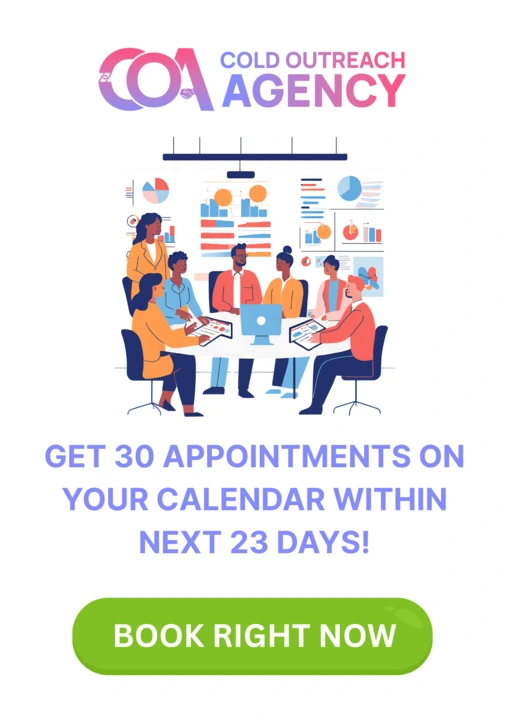There’s a reason why people groan at the mention of LinkedIn DMs. Most of the time, they suck.
It’s either a pitch slapped together with zero context or a robotic message that screams template overload. And let me be real—I’ve been on both sides of this. I sent those bad messages when I was starting out, and I’ve also ignored hundreds of them every week.
But the truth is: that LinkedIn outreach works.
It still works if done right.
I run a Cold Outreach Agency, and LinkedIn outreach is one of our core services. But before we ever booked meetings like clockwork, I had to learn the hard way about the outreach mistakes that were silently killing my campaigns. I’m talking about messages that got ignored, connections that never replied, and even people who straight-up blocked me.
So in this article, I’m pulling back the curtain and breaking down the biggest LinkedIn outreach mistakes that I see almost everyone making—and most importantly, I’ll show you exactly how to avoid them.
1. Sending the Same Message to Everyone
I get it. When you’re just starting, you think outreach is a numbers game. You copy-paste the same message to 100 people and pray that one bites.
But here’s the thing: LinkedIn isn’t cold email. It’s not a spam blast platform. It’s social, personal, and way more transparent. People can smell a generic message from a mile away.
Tell me honestly—would you reply?
Now compare that with:
> “Hey Rahul, saw your agency works with eCommerce brands and you recently posted about scaling ROAS for a supplement brand—really solid stuff. I’m working on something similar for a client and figured it’d be cool to connect.”
Boom. Big difference.
To avoid This Mistake:
Use micro-personalization. No need to write an essay. One line that shows you did your homework is enough.
Build outreach sequences in tools like Clay, Instantly, or Waalaxy that allow dynamic personalization at scale.
Don’t automate garbage. Automate relevance.

2. Pitching in the First Message
You just connected, and the very next thing they get is a wall of text with your offer, case studies, pricing, and a CTA.
It’s like proposing marriage on the first date. Chill.
Nobody wants to be sold to right after they accept your request. It’s a total turn-off and makes you look desperate.
LinkedIn is a platform where trust needs to be built first.
To avoid This Mistake:
Start with value and context. Your first message should either:
Start a conversation
Compliment or ask something relevant
Share something helpful
Delay the pitch. Use a 3-step message sequence:
1. Connection Request
2. Icebreaker DM (non-sales)
3. Transition into a value-driven offer or insight
People buy from people they trust. Use the DMs to build that.
3. Your Profile Looks Like a Resume, Not a Funnel
This one’s a silent killer.
You could send the best message in the world, but if your LinkedIn profile doesn’t show who you help, how you help them, and why they should care—you’re dead in the water.
I made this mistake early on. My profile headline used to be:
> “Founder | Marketer | Growth Hacker | Cold Email Expert”
It told people what I do, but not what they get from working with me.
Once I flipped the script, leads started coming in without me even messaging first.
Now my profile reads something like:
> “I help agency owners and B2B founders book more qualified meetings using AI-personalized LinkedIn & cold email outreach. Founder @ Cold Outreach Agency.”
Clear. Results-driven. Benefit-first.
To avoid This Mistake:
Headline: Show who you help + what you help them do
Banner: Reinforce your offer or include a CTA
About section: Tell your story, include proof, and make it easy to take the next step (Calendly, website, etc.)
Featured section: Showcase results (screenshots > paragraphs)
Your profile is your sales page. Treat it like one.
4. Sending Connection Requests Without a Message
LinkedIn gives you the option to send a connection without a note. And sure, if your profile is strong enough, it might still work.
But if you’re doing cold outreach and targeting strangers—not adding a note is lazy.
Sending a personalized note increases your acceptance rate by at least 20-30%. That’s not a small number when you’re trying to build a pipeline consistently.
Even a one-line connection message can boost replies. Here’s one I’ve tested with great success:
> “Hey Rishi, saw your SaaS just raised a seed round—huge congrats! I’ve been connecting with founders in the B2B space lately and would love to connect.”
No pitch. Just context.
To avoid This Mistake:
Always include a note when connecting cold
5. Writing Long Paragraphs
Nobody reads walls of text in their DMs. If your message looks like a mini eBook, it’s getting skipped.
Keep in mind—most people check LinkedIn on their phones. Dense blocks of text = friction.
This is a formatting game.
To avoid This Mistake:
Use short sentence
Break lines often. Like this.
Use white space to your advantage
Aim for 3-5 lines max per message
Here’s a simple format:
> Hey [Name],
Saw you’re leading growth at [Company]—impressive stuff.
Quick one: we’ve been helping [similar company] cut CAC by 30% using a unique LinkedIn + email play.
Worth a quick chat?
This feels like a real message from a human—not a sales robot.
6. Not Following Up
One of the biggest mistakes I made in my early outreach campaigns? I sent one message… and waited. And waited. And gave up.
Bad idea.
People are busy. They forget. Or they just miss it the first time.
It means relevant, respectful nudges.
How to Avoid This Mistake:
Build a 3-4 message sequence over 7–10 days
Use tools like Waalaxy, Zopto, or Sales flow to automate smart follow-ups
Add value in each follow-up (case study, relevant resource, short loom video)
Pro tip: your second or third message is often where the actual reply comes from
7. Not Engaging Before Outreach
This is a killer strategy that very few people use.
Before sending a DM, take 3-5 minutes to engage with your prospect’s content.
Like their post. Drop a genuine comment. View their profile.
This warms them up before your name hits their inbox.
It’s not just psychology. It’s visibility. They see your face. They recognize your name. When your message shows up—it doesn’t feel cold anymore.
To avoid This Mistake:
Only message after 1–2 interactions
You’ll notice a massive jump in reply rates just by doing this.
8. Not Defining Your ICP Properly
Even with the best message in the world, if you’re targeting the wrong people—it won’t work.
I can’t stress this enough: outreach is 80% targeting, 20% messaging. If your Ideal Customer Profile is vague, your results will always be inconsistent.
When I niched down to B2B agency founders doing $10K+ MRR with a sales team but poor lead flow—things changed.
Suddenly, people resonated. They replied. They booked calls.
To avoid This Mistake:
Get ultra-clear on:
Industry
Company size
Role/title
Pain points
Buying triggers (funding, hiring, layoffs, growth stage)
Use LinkedIn Sales Navigator filters to laser-focus your targeting
Refine based on reply data—if people aren’t responding, revisit your ICP
9. Sending Messages at the Wrong Time

Best time windows I’ve seen?
Also—don’t hit someone immediately after they accept your request. Give it 24–48 hours unless it’s a hot lead.
Think like your prospects—when are they most likely to check LinkedIn?
Always optimize based on timezone.
Conclusion
Let me leave you with this one hard truth: LinkedIn outreach isn’t broken—people are just doing it wrong.
That’s the part most folks don’t want to hear. They’ll blame the platform, the algorithm, or their luck. But deep down, it’s not about any of that. It’s about the strategy—or the lack of it.
When I first started cold outreach on LinkedIn, I was making almost every mistake I just broke down for you. And back then, I didn’t even know they were mistakes. I thought I was “hustling” by blasting messages. I thought the generic copy was “efficient.” I thought people didn’t reply because they were too busy.
But here’s what I’ve learned over time, after running hundreds of outreach campaigns for clients across multiple industries:
The outreach game isn’t about volume. It’s about relevance.
It’s not about sales. It’s about conversations.
It’s not about automation. It’s about strategy.
1. Every Message Is a First Impression
Think about your inbox. How many “Hi, I help businesses like yours…” messages do you see? Probably dozens.
And what do you do with them? You ignore them. You don’t hate the sender. You just don’t care—because they didn’t give you a reason to.
Your prospect feels the same way. Timing matters. Because every message you send is a shot at the first impression—and you don’t get many of those.
You don’t need to write poetry in DMs. But if your message doesn’t feel like it was written for them, it’s getting buried.
2. Trust > Tricks
Too many people are still playing the outreach game like it’s 2016. Automation bots, bait-and-switch tactics, misleading messages, baiting people with “value” then sliding in a pitch—it doesn’t work anymore.
We’re in 2025.
That trust starts with:
A clean, benefit-driven profile
A genuine tone
Real proof (not just hype or screenshots)
Consistency in showing up through content, comments, and conversation
Outreach should feel like an extension of your brand—not a shortcut to game the system.
3. Your Profile Is a Silent Sales Rep
People don’t respond to your message alone—they respond to your profile, your positioning, and your perception.
Even if your message lands, the very next thing they do is click on your profile.
Now imagine they land there and all they see is:
Yawn.
Now imagine this instead:
> “I help B2B agency founders scale qualified leads using hyper-personalized LinkedIn + email outreach. | 150+ booked meetings generated for high-ticket service providers.”
That makes people stop scrolling. That sparks curiosity. That sets the tone before the conversation even begins.
So if your profile still reads like a boring resume instead of a clear sales funnel—fix it today.
4. Relevance Is the New Personalization
This one’s subtle but game-changing.
Everyone talks about personalization. And yes, first-name tags, references to a recent post, or their company are good. But that alone won’t cut it anymore.
Because even personalized messages can be irrelevant.
What works is relevance to their current goals, pain points, or triggers.
If your offer doesn’t tie directly into something they care about right now—your message still gets ignored, no matter how well you wrote it.
So instead of asking:
> “How can I personalize this message?”
Ask:
> “Why should they care about this right now?”
That shift in thinking is what takes you from average reply rates to predictable pipelines.
5. Relationships Beat Random Reach-Outs
People don’t book calls because your pitch is slick. They book because they feel understood.
And that only happens when you take time to build relationships—even if it’s a short window.
Whether it’s:
Liking and commenting on their content
Sending a value-first message
Referring to something you noticed about their company
Or following up respectfully instead of spamming
…it’s these small moments of relationship equity that add up and make your outreach convert.
One good conversation can turn into 10 referrals, 3 clients, and a year of income.
But only if you approach outreach as a relationship game—not a lead game.
6. Follow-Up Is Where Fortune Lives
Most people give up after one message.
But think about how you operate. You get a message, read it, mean to reply—but forget. Happens to all of us.
That’s why follow-up isn’t annoying. It’s respectful—if it’s done the right way.
Don’t just “circle back” with a lazy line. Add a little value each time:
A recent result you got
A free resource
A helpful insight
Even a loom video
7. The Right People > More People
Let me say it louder: Your success in LinkedIn outreach depends more on who you’re targeting than how many you’re messaging.
You can run the best sequence ever, but if your ICP isn’t nailed down—you’re shooting in the dark.
The moment I niched down and started targeting:
Agency founders
With $10k+ MRR
In B2B services
Who relied on referrals and had no outbound system… my entire business changed. My reply rate skyrocketed. And clients started thanking me for reaching out to them.
That’s what happens when you combine targeting with timing and relevance.
So get obsessed with your ICP. Build custom segments.
8. Outreach Is Just the Start
Most people think outreach ends when you get the reply. That’s not true.
The real work starts once the conversation begins.
You need to lead the conversation, qualify them properly, offer genuine insight, and direct them toward a booked call—without sounding like a pushy closer.
Think of outreach as the door opener. But what happens after they step through that door? That’s what defines your actual results.
So don’t just optimize your messages. Optimize your funnel—from profile to DM to call to conversion.
Final Words: Make LinkedIn Outreach Human Again
We’re in a time where automation is easy, AI is everywhere, and everyone wants shortcuts.
But guess what’s rare now?
Real human connection. Authentic outreach. Relevant conversations.
That’s your advantage.
So if you’re tired of wasting time on outreach that leads nowhere…
If you’re ready to stop being ignored and start building a pipeline full of warm, qualified leads…
Then start by fixing the mistakes we covered.
And remember:
One great conversation can change your business.
Make sure you show up like someone worth talking to.
Let’s do better. Let’s make outreach feel human again.
And if you want to help build a LinkedIn + email multi-channel system that books meetings with your dream clients, you know where to find me.

